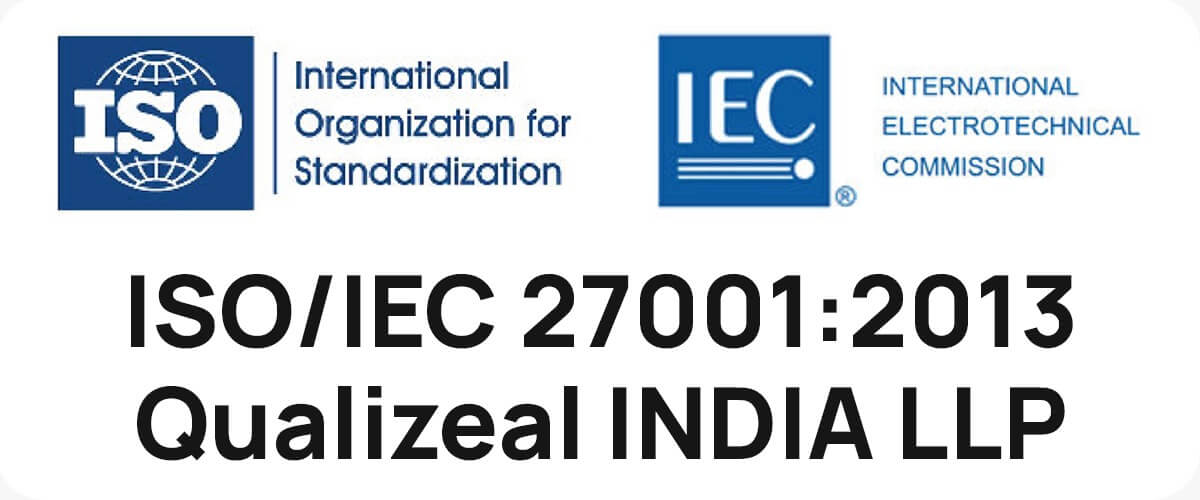Elevating Customer Centricity: The Power of Architecture Analysis in Quality Engineering.
In the fast-paced world of modern enterprises, the quality of software plays a pivotal role. While traditional software testing approaches have seen significant evolution, concerns still linger about the reactive nature of testing teams, often limited to defect detection based on specifications. However, some complex software engineering organizations have revolutionized their testing practices, shifting their focus from functional testing to engineering efficiency. Among the unconventional strategies, software architectural analysis-driven tests stand out as a potent tool.
The primary hurdle in adopting this approach is the lack of architectural analysis skills within testing teams. To overcome this challenge, enterprises may consider investing in upskilling software architectural concepts and enabling their test architects to embrace the mindset of an enterprise solution architect.
Step 1 – Understanding Software Architecture Quality Attributes:
Software architecture quality attributes, also known as non-functional requirements, define the behavior and performance of a software system. Dissected into six parts, they provide a blueprint to design test scenarios, identify test data, and define expected results.
- Personas for event triggers
- What can cause the event?
- When can the event occur?
- Where does it impact?
- How to handle it?
- What is the effectiveness of the solution?
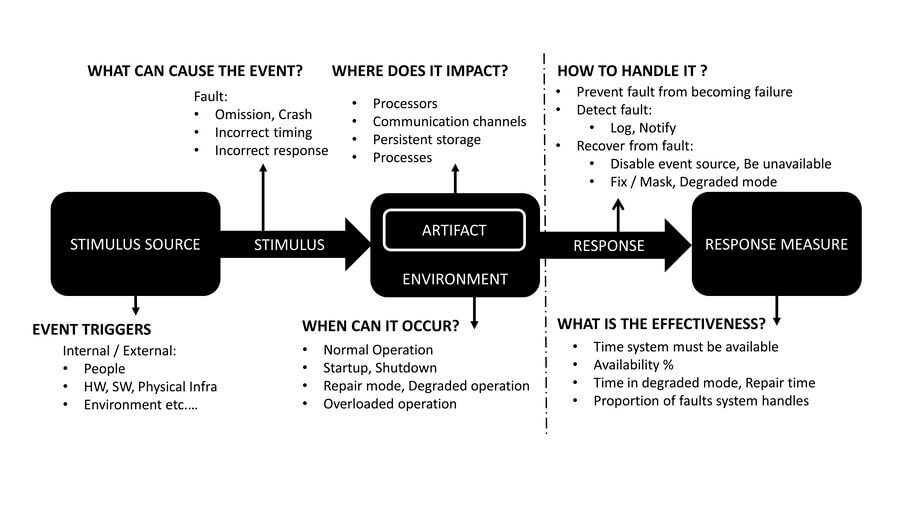
Step 2 – Correlating Architectural Patterns with Application Functionality:
Architectural patterns offer reusable design solutions to specific software design problems. By correlating patterns with desired functionality, a traceability matrix is established, aiding in the creation of relevant tests. For instance, leading companies employ various architectural patterns to deliver specific functionalities.
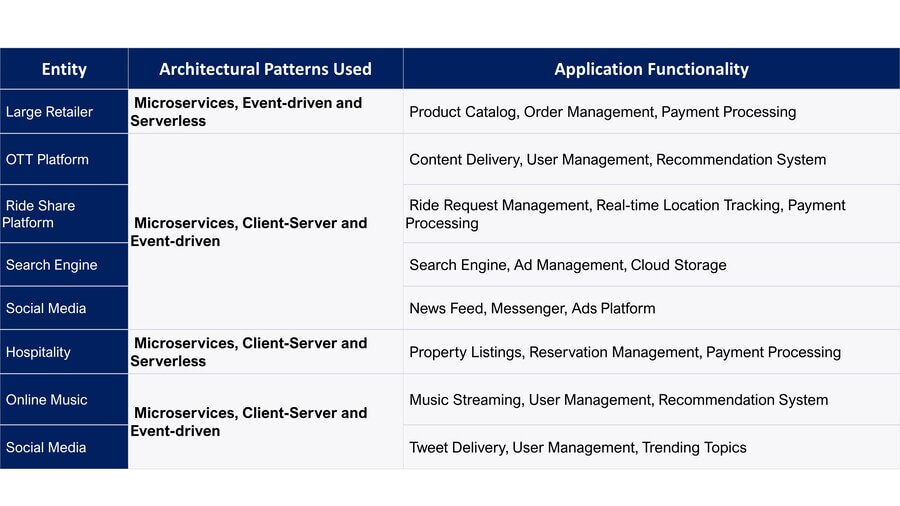
Step 3 – Identifying and Prioritizing Characteristics for Testing:
Different architectural patterns address various quality attributes, requiring the identification of key characteristics for evaluation. This process allows for the design of specific test strategies aligned with the chosen pattern. For example, microservices architecture is preferred for scalability and modifiability, necessitating test scenarios that validate service decomposition, discovery, and fault tolerance.
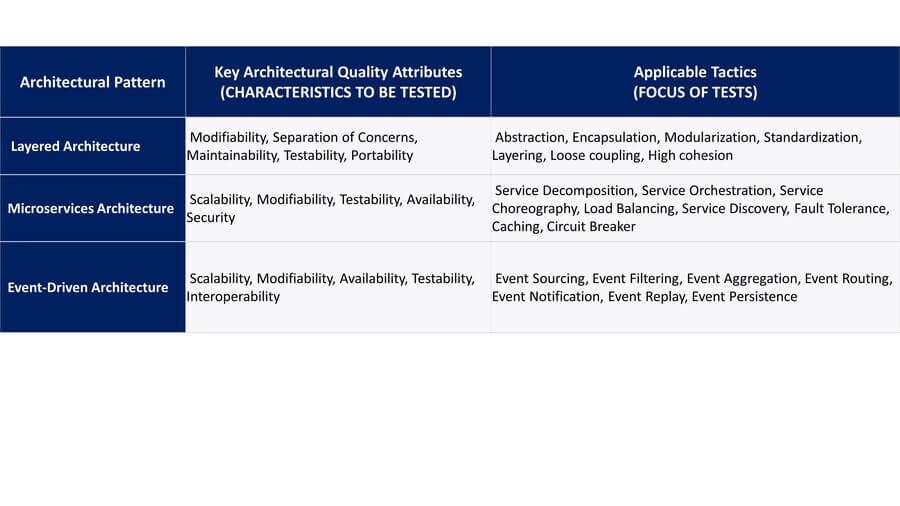
Few More Examples:
While tests are context specific, the list below attempts to provide an insight into several types of tests that can be designed for some of the common architecture patterns. You would need to design your test steps based on the listed test scenarios. You should also create test data that is specific to the test scenario.
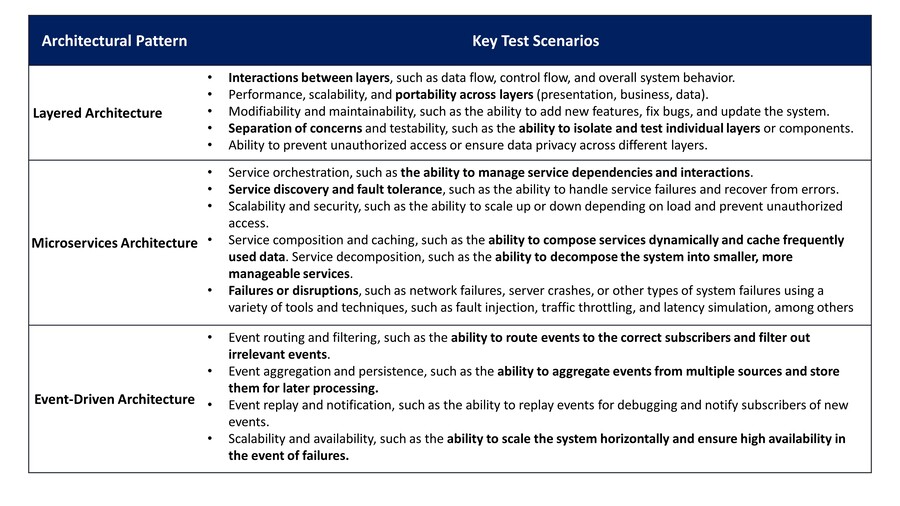
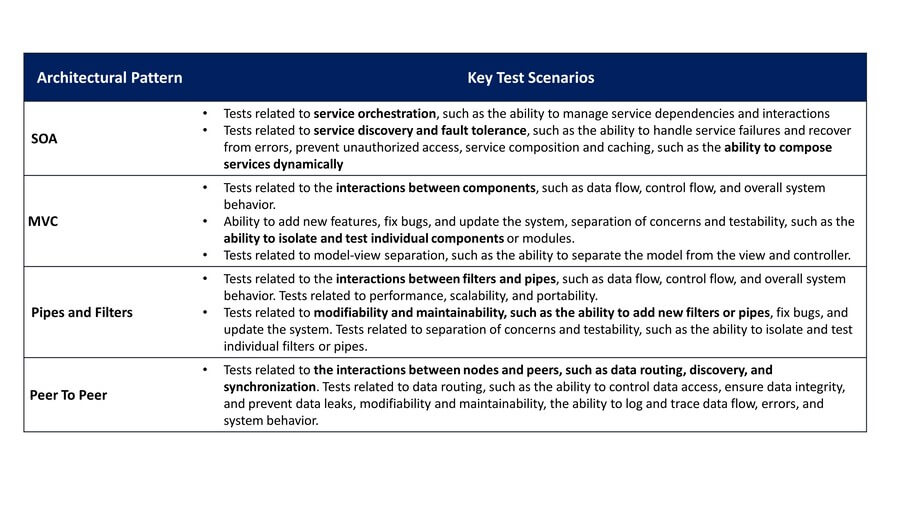
Conclusion:
The path to success in Quality Engineering lies in adaptability and improvisation. Modern testing strategies and techniques are vital to stay relevant in the ever-changing technological landscape. Architecture Analysis emerges as a powerful pre-design testing tool, ensuring the validation of “Architectural Quality Attribute Scenarios” before implementation. As applications become more complex, it is crucial to cater to this diversity in testing.
In the journey towards “Engineering Quality,” organizations transform their approach to Quality Engineering. By embracing this transformative process, we enable customer-centricity, cost savings, and defect prevention. #CustomerCentricity #CXOToolkit #CostSavings #SoftwareAnalysis #QualityEngineering #DefectPrevention #ShiftLeft




